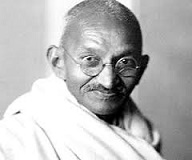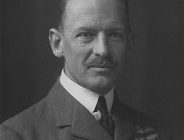Interested in the Indian lawyer Gandhi’s life in South Africa? Learn more about the impact of Gandhi in South Africa…
Gandhi landed in South Africa in the year 1893 at the age of 24. Arriving in Durban the young lawyer was to participate in a lawsuit in Transvaal. Since he was an Indian he was ordered off the train, even though he had booked a first-class ticket to Johannesburg.
That was because of his color and origin as an Indian, which was considered insulting to white men who wished to travel without any colored person in their presence. The young lawyer had to spend a cold night at a nonwhite waiting room in the railway station in Pietermaritzburg waiting to catch the next train.
The full name of Gandhi was Mohandas Gandhi, although he was later known as Mahatma Gandhi in India and around the world. He eventually settled back in Natal where he assisted the growing community of the imported Indian population. These people had been brought over by the British colonists from India to work the extensive sugar plantations in South Africa.
Origins of Gandhi
From Porbandar, which is presently known as the state of Gujarat, the lawyer was born there on October 2, 1869. He was educated in law at the prestigious University College, London. Shortly after his admittance into the British bar in 1891 he returned to India to pursue his law practice, but met with little success in Bombay.
However two years later he took on a case by an Indian firm that had assets in South Africa. He was retained as a legal adviser in Durban and was known as the first colored lawyer in South Africa. He was later on enrolled in the Supreme Court. He was to leave for India when the incident on the train occurred and he changed his mind deciding to stay back to assist fellow Indians.
The Natal Indian Congress was founded by Gandhi in 1894 in order to agitate for the rights of Indians living in South Africa. By 1896 he had started teaching the passive resistance policy that has become famous around the world even today and is associated with him. Gandhi’s actions did eventually achieve a certain amount of success in securing a limited amount of rights for Indians living in South Africa. He went on to define a term from the Sanskrit language, which meant truth, and is translated literally as Satyagraha. The term indicates a devotion to the truth in Gandhi’s philosophy. The young lawyer went on to publish his weekly articles and columns in the newspaper since 1903. He was widely published in the weekly Indian Opinion, which was printed at Phoenix and which lay only 20 km away from Durban. In 1906 he gave aid against the Zulu revolt and also started a communal farming project specifically for Indians. By 1906 the peaceful revolution started in full force and people were willing to go to jail or die rather than obey any of the laws that discriminated against Asians.
His actions were directed against the authorities in South Africa and he was joined by thousands of Indians in his campaign of civil disobedience. This included strikes in the sugar plantation and lockdowns at the coalfields. There was also a long march from Natal to the Transvaal by the Indians. The main aim was to protest the policy of the Immigration Act. Gandhi was arrested many times, but his civic and humanitarian sense overrode any personal agenda. He was known to have arranged the ambulance corps during World War I. By 1914 in order to stem the uprising the government running the Union of South Africa had made very important considerations to accept his demands. Some of these allowed the recognition of Indian marriages as well as the poll tax being abolished. Once he saw that his work in South Africa had achieved a certain amount of success he returned to India.





